Amidst all the great pulp thrills and features in Sky Fighters, they ran a true story feature collected by Ace Williams wherein famous War Aces would tell actual true accounts of thrilling moments in their fighting lives! This time we have German Flyer Ritter von Schleich’s most thrilling sky fight!
Hauptmann Ritter von Schleich was one 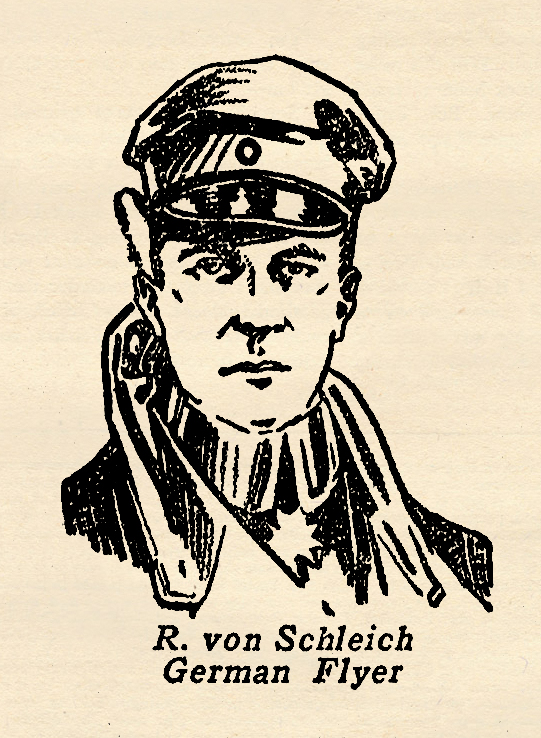 of the least known, but nevertheless, one of the greatest and most successful of the German war birds. A nobleman by birth, he was educated for service in the army beginning with his early childhood. When the war broke out he was an officer in the Uhlans, the most aristocratic branch of the German Army. After transferring to the flying corps, he served some time as an observer, before learning to become a pilot himself; paralleling in that respect the career of Baron Manfred von Richthofen, who preceeded him as an officer of Uhlans.
of the least known, but nevertheless, one of the greatest and most successful of the German war birds. A nobleman by birth, he was educated for service in the army beginning with his early childhood. When the war broke out he was an officer in the Uhlans, the most aristocratic branch of the German Army. After transferring to the flying corps, he served some time as an observer, before learning to become a pilot himself; paralleling in that respect the career of Baron Manfred von Richthofen, who preceeded him as an officer of Uhlans.
War has its humorous moments as well as its many tragic ones. At least it would seem so after reading the account of the German flying captain, who took a captured Allied plane and rode the battle skies in company with an enemy patrol, the only instance upon record when it was known to be done.
A SKY TRICK
by Captain Ritter von Schleich, Imperial Flying Corps • Sky Fighters, July 1934
THE DAY before this, my most thrilling day in the air took place. My staffel had forced a young, inexperienced French pilot to land his latest model Spad pursuit plane intact behind our own lines.
After painting a black cross on it in the place of the circular cocarde of the Allies I decided it would be great fun to take it on a flight over the enemy lines. Fortunately, my staffel had forced it to land with almost a full supply of ammunition, so I had plenty of bullets for the Vickers guns. I phoned our anti-aircraft batteries and informed them of my plans so they would not bother me.
After taking off, I headed for Verdun. Our own Archies let me pass unmolested. When I slid across the lines, the Allied Archies did the same thing. I encountered a single enemy aircraft on patrol over Verdun, but he waved at me and passed on. I laughed and waved back, then swung about and headed for the Argonne. Over the Argonne I ran into the tail end of a formation of five Spads who were sweeping along parallel with the lines at 10,000 feet.
I goosed up my engine and took my place at their rear, flying along behind them and following the leader’s signals as well as I could. Suddenly they banked and flew over my own lines. I went in with them, still keeping my place in the formation.
As I flew along I wondered what would have happened if the leader really knew who it was tailing along at the rear of his flight. It was a sad thought, though. It certainly would have been curtains for me if those Spad pilots had suddenly turned and charged me.
We had gone about five miles behind our own lines when I decided that I was not
giving our Archie gunners any breaks at all. They had been directed not to fire at my plane, hence could not fire at the others in the formation without danger of getting me.
I banked off suddenly, went into a half roll, then dived to 6,000 feet. Our Archie gunners opened up then with a terrific barrage. The Spad pilots maneuvered then to escape it. The leader wheeled, saw me going down, caught sight of the black cross on my Spad for the first time, I guess, and came tearing down after me.
At 3,000 feet he let me have it—a heavy burst that forced me to duck swiftly. Now, that he had attacked me, I felt that I would not be taking advantage of my trick, so I maneuvered into shooting position and fired back.
We went at it hammer and tongs. I swept by him so close one time that I could see the angry expression on his face. We went round and round. Bullets nicked my Spad, but they did not come close to me. Out of the corner of my eye, I saw his mates up above come streaking down to join the fun. I knew I had to do something quick or be in an awful pickle. I zoomed, half rolled, came down at my opponent with both Vickers blazing. The burst was effective. He sagged in his pit. The Spad went floating down in an uneven spiral.
I followed down until it crashed, then went hedge hopping over the field for my staffel drome, with all of the speed I could get from my captured Spad. Our Archie gunners kept my pursuers so high they could not reach me.
It was my twentieth victory. I got official credit for it later. Yes, under the circumstances I am sure it was my most thrilling sky fight.
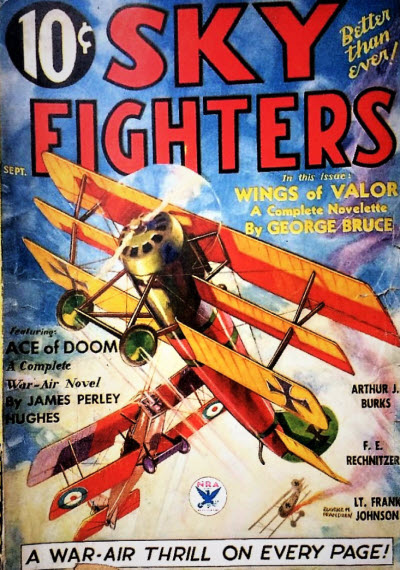 Silent Orth—ironically named for his penchant to boast, but blessed with the skills to carry out his promises—takes on four of Germany’s greatest Aces! Hauptmann Kruger, Weisskopf, Buchstabe and Braunstein. Their insignia are, in the order named, a crimson splash on the sides of the fuselage, representing blood; a hooded figure carrying an enemy’s head in his hands; the opened Book of Life with blank lines, presumably to hold the names of condemned enemies; and a comet with a tail of fire! From the pages of the September 1934 issue of Sky Fighters, it’s Silent Orth in “Shooting Star!”
Silent Orth—ironically named for his penchant to boast, but blessed with the skills to carry out his promises—takes on four of Germany’s greatest Aces! Hauptmann Kruger, Weisskopf, Buchstabe and Braunstein. Their insignia are, in the order named, a crimson splash on the sides of the fuselage, representing blood; a hooded figure carrying an enemy’s head in his hands; the opened Book of Life with blank lines, presumably to hold the names of condemned enemies; and a comet with a tail of fire! From the pages of the September 1934 issue of Sky Fighters, it’s Silent Orth in “Shooting Star!”




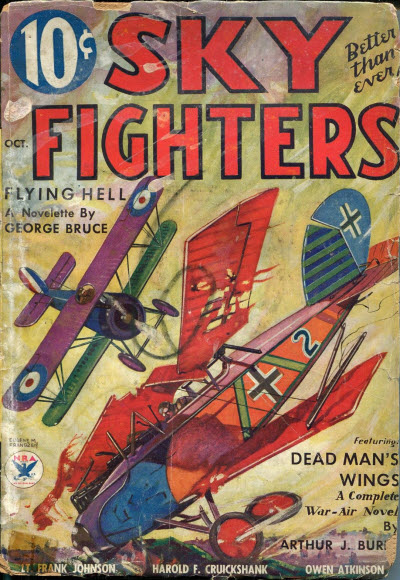 a story by another of our favorite authors—
a story by another of our favorite authors—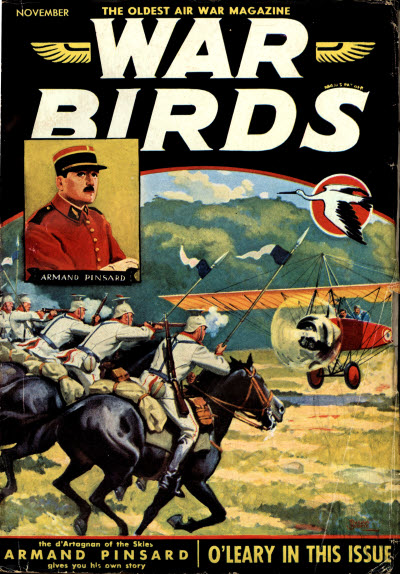 a story from the pen of C.M. Miller! Miller is known to Age of Aces readers as the author behind
a story from the pen of C.M. Miller! Miller is known to Age of Aces readers as the author behind 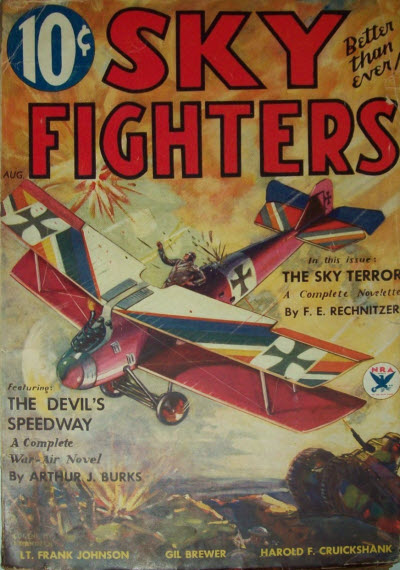 Silent Orth—ironically named for his penchant to boast, but blessed with the skills to carry out his promises—takes on a perilous mission to bomb a German ammunition dump. Using all the tricks and flying skills up his sleeve, Orth races to drop his bombs before the entire German Air force comes down on his neck. From the pages of the August 1934 issue of Sky Fighters, it’s “Orth’s Flight Against Time!”
Silent Orth—ironically named for his penchant to boast, but blessed with the skills to carry out his promises—takes on a perilous mission to bomb a German ammunition dump. Using all the tricks and flying skills up his sleeve, Orth races to drop his bombs before the entire German Air force comes down on his neck. From the pages of the August 1934 issue of Sky Fighters, it’s “Orth’s Flight Against Time!” a story from the pen of a prolific pulp author and venerated newspaper man—Frederick C. Painton. In “Flaming Death” Painton gives us a pulse-stirring war-air novelette—”B” Flight’s mascot, Babe Norwood, the squadron’s youngest flyer, is shot down with incendiary bullets! All of the fighting nations had agreed to ban their use—so rigidly were they banned that any flyer caught using them was instantly stood against the wall with barely the mockery of a drum-head court-martial. The squadron uses all avenues of the services to hunt down the culprit and bring him to justice! From the November 1934 Sky Fighters it’s Frederick C. Painton’s “Flaming Death!”
a story from the pen of a prolific pulp author and venerated newspaper man—Frederick C. Painton. In “Flaming Death” Painton gives us a pulse-stirring war-air novelette—”B” Flight’s mascot, Babe Norwood, the squadron’s youngest flyer, is shot down with incendiary bullets! All of the fighting nations had agreed to ban their use—so rigidly were they banned that any flyer caught using them was instantly stood against the wall with barely the mockery of a drum-head court-martial. The squadron uses all avenues of the services to hunt down the culprit and bring him to justice! From the November 1934 Sky Fighters it’s Frederick C. Painton’s “Flaming Death!”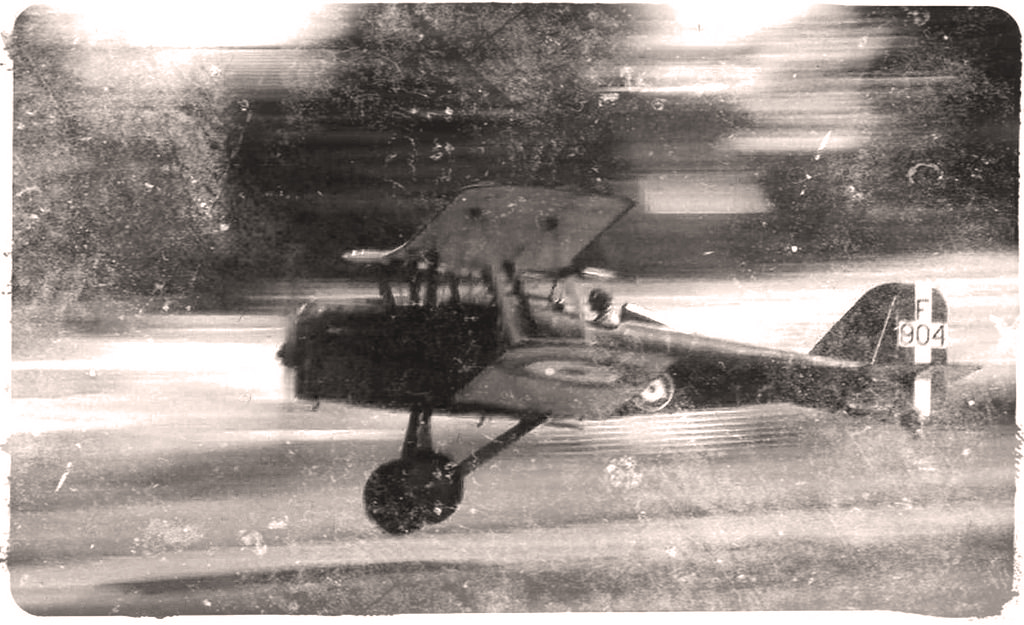
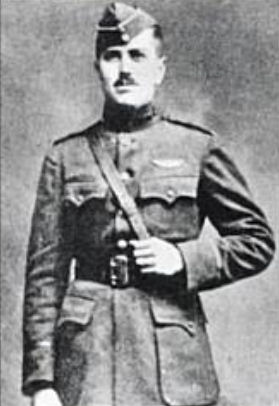 Flight Commander in the 95th Aero Squadron. He is credited with seven victories and was awarded the Distinguished Service Cross with oak leaf cluster, the French Legion of Honor, the Croix de guerre and the Order of the Crown of Belgium. Sewall was the first American aviator whose machine had been
Flight Commander in the 95th Aero Squadron. He is credited with seven victories and was awarded the Distinguished Service Cross with oak leaf cluster, the French Legion of Honor, the Croix de guerre and the Order of the Crown of Belgium. Sewall was the first American aviator whose machine had been 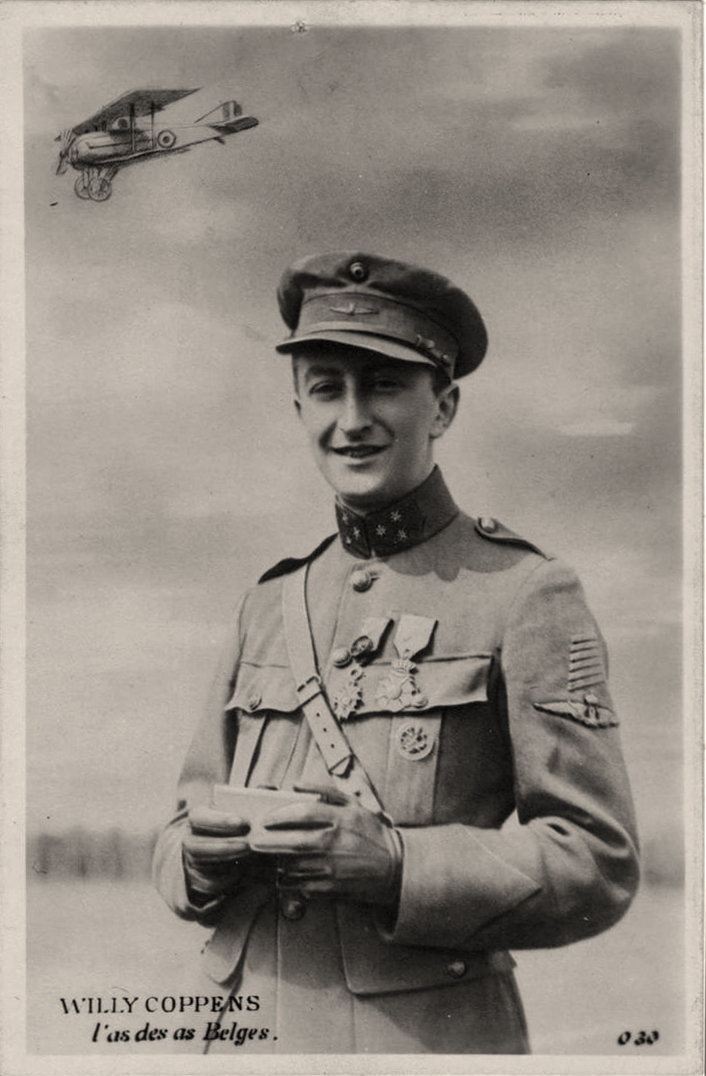
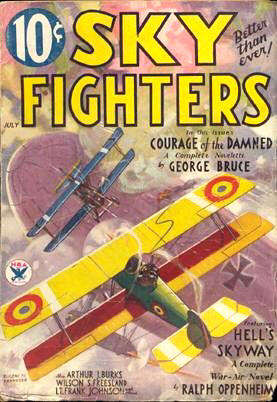 but Silent Orth is back! Silent Orth—ironically named for his penchant to boast, but blessed with the skills to carry out his promises—comes up against a trio of deadly marksmen who manage to take down their victims with but a single bullet! Orth must take down all three before fresh new recruits arrive the next day—The problem is, Orth has vowed to take each of them out with a single shot. From the July 1934 issue of Sky Fighters it’s Silent Orth in “Single Action!”
but Silent Orth is back! Silent Orth—ironically named for his penchant to boast, but blessed with the skills to carry out his promises—comes up against a trio of deadly marksmen who manage to take down their victims with but a single bullet! Orth must take down all three before fresh new recruits arrive the next day—The problem is, Orth has vowed to take each of them out with a single shot. From the July 1934 issue of Sky Fighters it’s Silent Orth in “Single Action!”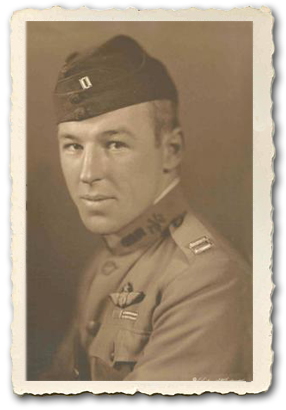
 of the least known, but nevertheless, one of the greatest and most successful of the German war birds. A nobleman by birth, he was educated for service in the army beginning with his early childhood. When the war broke out he was an officer in the Uhlans, the most aristocratic branch of the German Army. After transferring to the flying corps, he served some time as an observer, before learning to become a pilot himself; paralleling in that respect the career of Baron Manfred von Richthofen, who preceeded him as an officer of Uhlans.
of the least known, but nevertheless, one of the greatest and most successful of the German war birds. A nobleman by birth, he was educated for service in the army beginning with his early childhood. When the war broke out he was an officer in the Uhlans, the most aristocratic branch of the German Army. After transferring to the flying corps, he served some time as an observer, before learning to become a pilot himself; paralleling in that respect the career of Baron Manfred von Richthofen, who preceeded him as an officer of Uhlans.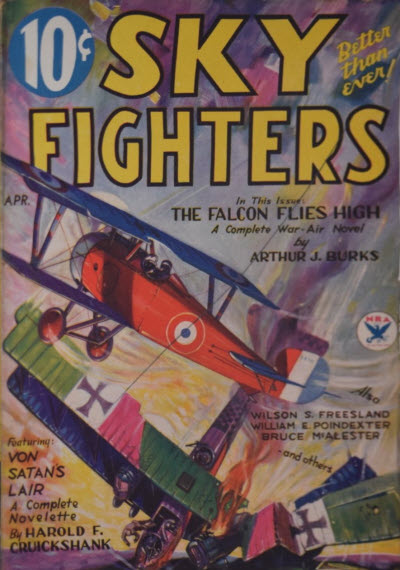 a story by another of our favorite authors—
a story by another of our favorite authors— Citizen Genet, who served as the revolutionary ambassador from France during George Washington’s term as president, Edmond C. Genet had a distinguished heritage. Mild-mannered and handsome he was a typical soldier of fortune at heart, possessing an astonishing courage. At 10 he missed an appointment to Annapolis and immediately enlisted in the navy where he participated in the taking of Vera Cruz. A year later he was in battle in Haiti. Later on after the war in Europe broke out, he sailed for France to enlist in the Foreign Legion. He served for some years in the trenches as a simple poilu, then was transferred to aviation and assigned to Escadrille N-124, better known as the Lafayette, where he was the youngest American in a company of famous men. Genet’s flying time on the front was short. He was one of the few airplane pilots to be killed in the air by enemy shrapnel. He was the first American to die in action under the stars and stripes, his death occurring just ten days after America entered the war. The account below is from one of his letters home.
Citizen Genet, who served as the revolutionary ambassador from France during George Washington’s term as president, Edmond C. Genet had a distinguished heritage. Mild-mannered and handsome he was a typical soldier of fortune at heart, possessing an astonishing courage. At 10 he missed an appointment to Annapolis and immediately enlisted in the navy where he participated in the taking of Vera Cruz. A year later he was in battle in Haiti. Later on after the war in Europe broke out, he sailed for France to enlist in the Foreign Legion. He served for some years in the trenches as a simple poilu, then was transferred to aviation and assigned to Escadrille N-124, better known as the Lafayette, where he was the youngest American in a company of famous men. Genet’s flying time on the front was short. He was one of the few airplane pilots to be killed in the air by enemy shrapnel. He was the first American to die in action under the stars and stripes, his death occurring just ten days after America entered the war. The account below is from one of his letters home. Belgian Ace of Aces. He got his initial training as a soldier and officer in the cavalry division of the army. He transferred later on to the Flying Corps and began immediately to compile the record of victories that gained him top ranking among sky fighters.
Belgian Ace of Aces. He got his initial training as a soldier and officer in the cavalry division of the army. He transferred later on to the Flying Corps and began immediately to compile the record of victories that gained him top ranking among sky fighters.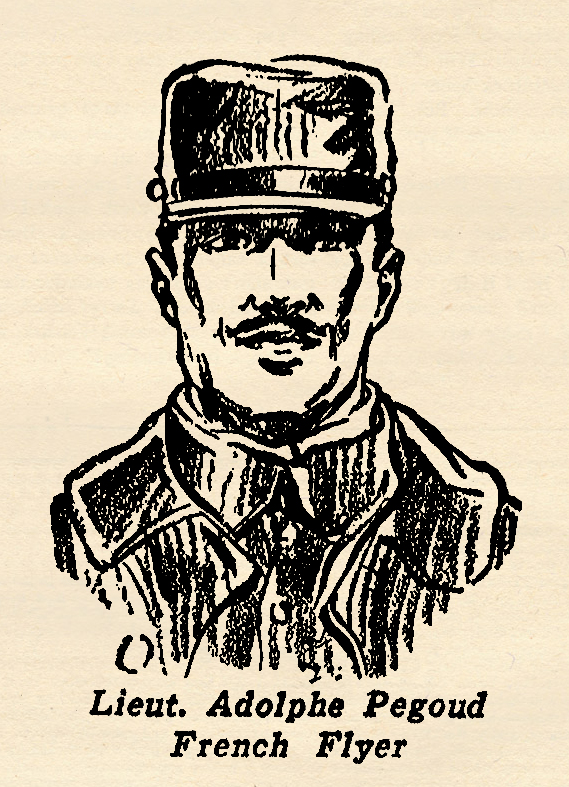 famous flyer before the war began. In 1913, flying a tiny Bleriot monoplane, he astonished the world by doing a series of intricate air maneuvers. Later, he made an upside down landing, the first and to this day the only aviator deliberately to perform such a stunt.
famous flyer before the war began. In 1913, flying a tiny Bleriot monoplane, he astonished the world by doing a series of intricate air maneuvers. Later, he made an upside down landing, the first and to this day the only aviator deliberately to perform such a stunt.